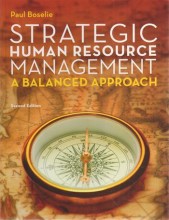Organisations and their structures
13 important questions on Organisations and their structures
As part of the concept organization, we have discussed basic assumptions. What are these, how do they evolve over time and what is the main problem?
Over time the basic assumptions become more implicit.
The main problem is that we get trapped in routines.
Goals and structure as an interaction premise: what is the difference between formal and informal goals / structure / infrastructural parts / technology?
Difference between formal and informal regarding:
- Goals;
Formal goals e.g. Type of product, number of products etc.
Informal goals e.g. Emergent, enacted goals.
- Structure;
Formal: formally defined task structure
Informal: workarounds, side-stepping the hierarchy.
- Infrastructural parts;
Formal: membership, systems of accountability.
Informal: informal social norms about how organizational members interact with each other.
- Technology;
Formal: acquired machinery, ICT, tools, formally defined architecture.
Informal: Idiosyncratic/performative use of tools and space.
What are the three requirements of an adequate structure?
1. Supports interactions in two ways:
a) realizing societal contribution
b) have space to reflect and improve
2. Comply with cybernetic criteria:
a) the network of tasks (structure) is not the source of disturbances
b) within this network, tasks have enough regulatory potential to solve disturbances itself.
3. Have low parameter values
Note that using LVP, the first two requirements can be realized
- Higher grades + faster learning
- Never study anything twice
- 100% sure, 100% understanding
Why do high parameter value structures cause problems?
Why are low parameter value structures important?
The number of interactions is determined by the parameters separation and specialization.
The variability is determined by the parameter functional concentration. The variety of content depends on the number of orders.
What is the difference in the definition of structures regarding De Sitter and Mintzberg? And what is a task?
Mintzberg: structures are the way the main transformation of an organization is broken down into sub-tasks and then coordinated.
Definition of task: assigning operational and regulatory activities to capacities. The capacity is someone in an organizational unit.
Elaborate on the parameters: functional concentration, specialization of operational activities, separation and specialization of regulatory activities.
- Specialization of operational activities; degree to which operational tasks cover only a small part of the complete operational process.
- Separation; degree to which operational and regulatory activities are assigned to different tasks.
- Specialization of regulatory activities; degree to which regulatory tasks are divided into small tasks with a small regulatory scope.
Why can it be stated that episodic interventions are realized for, in and by organizations?
Based on which 3 relevant concepts can we describe what episodic interventions are?
2. Organizational structures
3. Interventions
What are interaction premises and how do they condition interactions?
Interactions are seen as impermanent, whereas the premises have a more permanent character (but can still be changed). These premises are a normative point of reference that give direction to further interaction. E.g. If a goal is set, then it guides the interaction in terms that people want to realize that goal.
What is the relationship between the functional requirements and structure?
Why does structural development need experimentation?
Structural development is about making a proper structure that facilitates creating societal contribution and is able to improve itself. When a structure is not able to do this, you change it via experimentation.
Some argue that inequality in organizations continuously reproduce and are very difficult to circument. How does this work?
In LVP's there is less separation and specialization, causing the minority to show what they're capable of. The BA's get disconfirmed
The question on the page originate from the summary of the following study material:
- A unique study and practice tool
- Never study anything twice again
- Get the grades you hope for
- 100% sure, 100% understanding
































